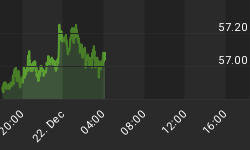Weekly Recap of the Metals, Energy, Grains, Meats, and Softs Markets
Energy
Energy futures settled the week higher on speculation that OPEC would continue cutting output to offset demand destruction seen from the global economic slowdown. Crude oil inventories have risen by 21.7 million barrels in the past 5 weeks.
U.S. crude oil inventories climbed 500,000 barrels to 311.9 million, according to the EIA, with demand for petroleum products falling 7.8-percent over the last four-week period, compared with the same time a year ago.
Distillate stocks, rose 2.3 million barrels to 126.6 million, the EIA said, with refinery utilization climbing nearly 1-percent from the prior week at 85.3-percent, the EIA said.
Motor gasoline demand averaged 8.9 million barrels per day, down 3.4-percent from the same time last year.
After cutting output last week, OPEC Secretary General Abdalla Salem El-Badri said Tuesday it could slash output again if prices keep falling. OPEC produces nearly 40-percent of the world's crude oil.
December crude oil gained $1.17 on the week at $65.32 a barrel, December heating oil finished the week 10.6 cents higher at $2.0842 a gallon, with December RBOB gasoline gaining 4.6 cents to settle the week at 1.4959 a gallon, and December natural gas settled the week 37.6 cents higher at $6.783 per BTU.
Metals
Gold closed nearly 2-percent lower on the week, with the December contract settling at $718.20 an ounce. Golds appeal as a flight to safety or as a hedge against future inflationary pressure from liquidity injections could not support gold from massive fund liquidations.
Gold is often seen as safe haven, traditionally sending prices higher during periods of economic uncertainty, but its recent fall has defied conventional wisdom. Fund liquidation, falling energy prices, and a dramatic rise of the U.S. dollar are seen as the major drivers for the drop in gold prices.
Copper gained nearly 8-percent this week, with the December contract settling 14 cents higher at $1.8290 a pound. After falling over 23-percent in the prior week, silver posted a gain of 8-percent on the week due to what some were calling oversold conditions.
December platinum fell $11.80 on the week to settle at $718.20 an ounce. December silver fell 48 cents to settle the week at $9.723 an ounce, January platinum gained $21.60 on the week to settle at $831.60 an ounce.
Grains
Grain traders took their cues from rising equity markets, falling crop estimates, and a pause in the climbing U.S. dollar. This sent corn and soybeans over 7-percent higher, with wheat raising a more modest 4-percent on the week.
U.S. corn harvest is now estimated at 12.033 billion bushels, falling 1.4-percent from the Oct. 10 report, the USDA said Oct. 28. The agency lowered their inventory estimates for Aug. 31 by 5.7-percent to 1.088 billion bushels from the prior forecast of 1.154 billion. December corn gained 7.7-percent on the week at $4.015 a bushel.
U.S. soybean harvest is now estimated at 2.938 billion bushels, falling 1.5-percent from the Oct. 10 report, the USDA said Oct. 28. The agency lowered their inventory estimates, prior to next years harvest, by 7-percent to 205 billion bushels. November soybeans gained 6.5-percent on the week to settle at $9.25 1/4 a bushel.
Spill-over strength from rising corn and soybeans, combined with firming exports helped send wheat 4-percent higher on the week. Speculation the global liquidity injections will boost demand for food, feed, and fuel sending prices higher. December wheat settled the week 20 cents higher at $5.36 1/4 a bushel.
About 65-percent of the U.S. winter wheat crop was rated in good or excellent condition as of Oct. 26, compared with 55-percent a year earlier. About 84-percent of the crop was planted, up from 79-percent a week earlier and 69-percent had emerged, up from 60-percent last week.
The Baltic Dry Index, the benchmark for commodity shipping costs, fell below 1,000 this week for the first time in six years as the credit crisis curbed global trade with ship-owners threatened to reject orders.
Softs
Cotton futures fell 4-percent this week, with the December contract settling 2.2 cents lower at 44.29 cents a pound. Concerns that China, the world's biggest user of cotton, will lower purchases from the U.S. on falling global demand for textile products have sent cotton over 35-percent lower on the year.
The price of cotton sitting well below the approximate 70-cents a pound it cost to produce was not enough to spur demand. U.S. cotton export sales falling 82-percent last week to 57,967 bales, the U.S. Department of Agriculture reported.
Sugar gained 12.5-percent on the week, with the March contract settling 1.53 cent higher at 12.29 cents a pound. Falling output expectations from Brazil, the largest cane producer, is expected to contribute to the global deficit. Demand for sugar will exceed supply by 3.9 million metric tons this marketing year, the London-based International Sugar Organization reported in August.
December cocoa gained nearly 4-percent on the week, with the December contract settling $76 higher at $2,053 a metric ton. December coffee gained 4.35 cents to settle the week at $1.13 a pound. November orange juice fell 4.45 cents on the week at 80.65 cents a pound.















